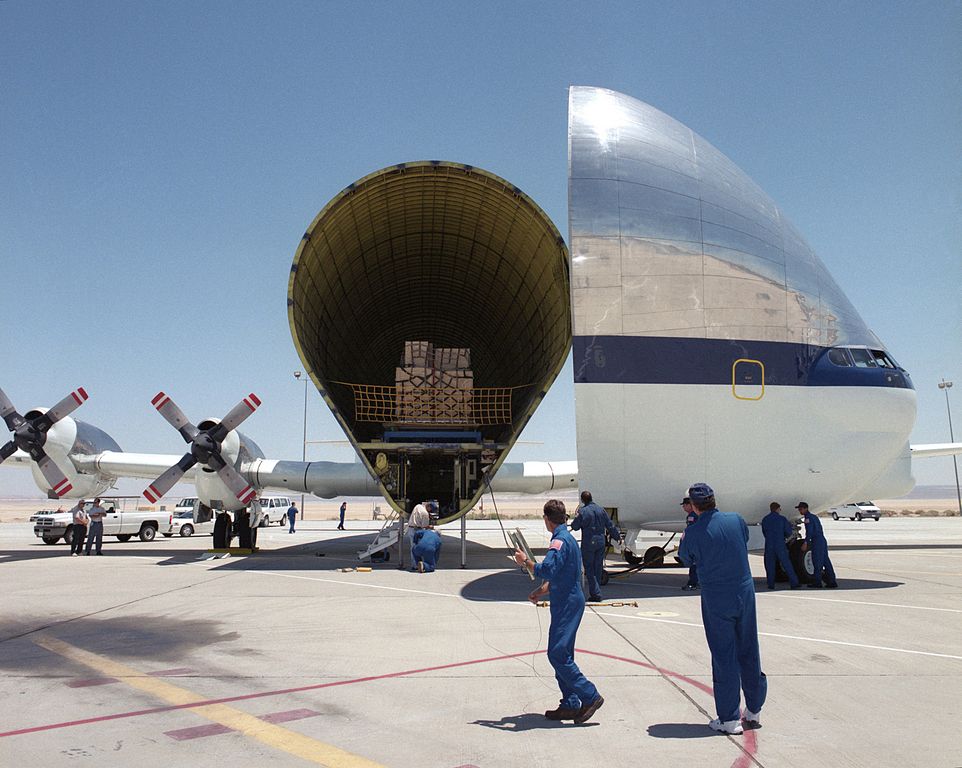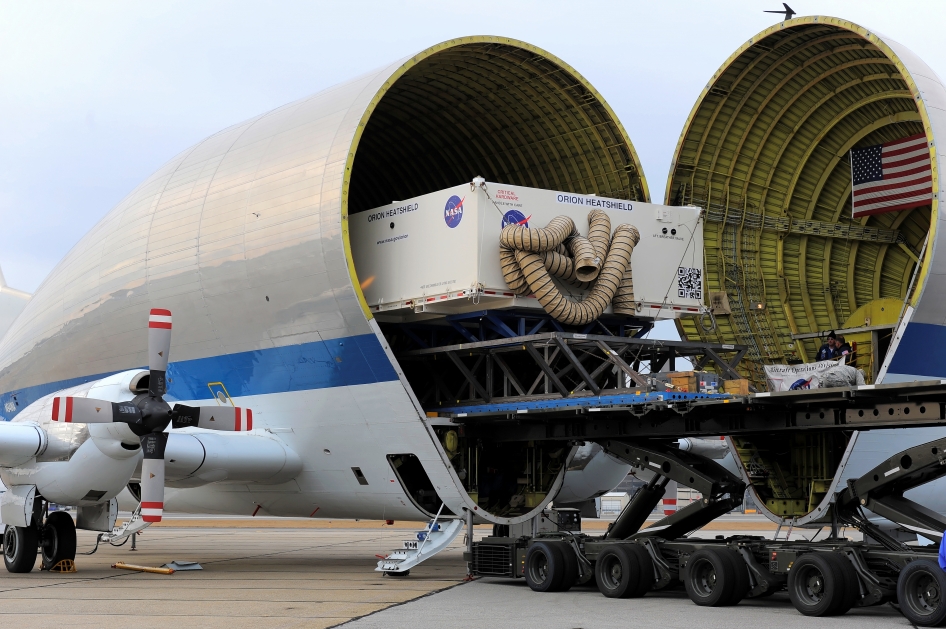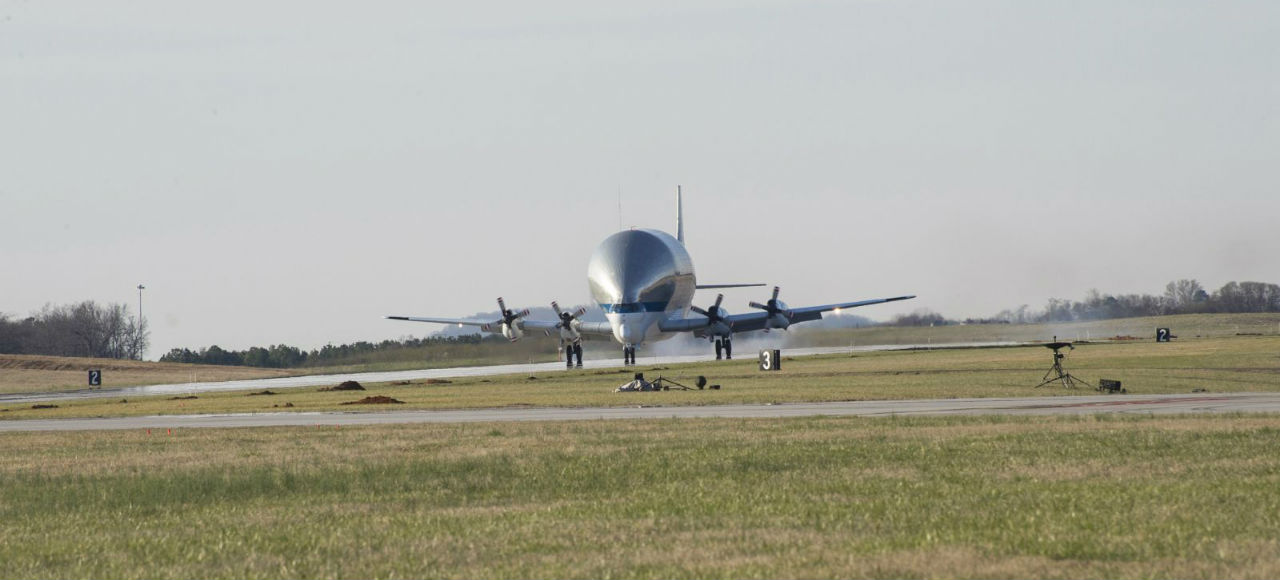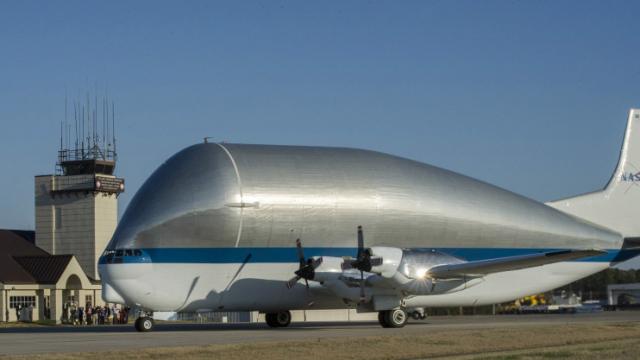When NASA needs to ship its outsized spacecraft components between production, testing, and launch facilities around the country, there is only one plane big enough, powerful enough, and — most importantly — wide enough to do the job: the Aero Spacelines Super Guppy.

First developed in 1962 as a successor to the Pregnant Guppy cargo aircraft, the Super Guppy was designed and built specifically for the purpose of shuttling NASA equipment around the country. Five Super Guppies have been built in all, and the fleet has helped move components for a number of programs including the Gemini, Apollo, and Skylab missions.

The original Super Guppy (the SG) was little more than a modified C-97J Turbo Stratocruiser (a militarized Boeing 377), lengthened and widened to increase its interior cargo capacity — it measured 43 metres long by 7.6 metres wide — with more powerful engines, bigger wings and a larger tail fin. Still, it could tote 2,500 kilograms of cargo at a cruising speed of 483 kph.
The follow-on Super Guppy Turbine (SGT), however, wasn’t based on anything — it was built from scratch. It measures 43.5 metres long and 11 metres tall, with a 47.5 metre wingspan. Featuring an internal cargo bay that’s 7.6 metres tall, 7.6 metres wide, and 34 metres long — that’s 11,887 cubic metres of cargo space — the SGT can carry a maximum payload north of 26 tons, at 467 kph up to 906 kilometres — or a payload of 7,257 kilograms as far as 3,219 kilometres.
It also incorporates a bunch of modern design features that the original SG lacked, like a pressurised cabin that allows it to cruise at much higher altitudes for more efficient flight and a 110-degree swing-out nose that allows for easier loading.

The original SG and SGT, built by Airbus in the 1960s, were joined in the early 1980s by two more SGTs — manufactured by UTA Industries in France. A fourth SGT, the last one produced and the only one still in service, was constructed as payment by the European Space Agency to NASA for its help transporting ESA components. The current SGT is primarily used to move ISS and Project Orion components around the country, though it is up to the task of carrying just about anything — as it did earlier this week when it delivered an innovative composite rocket fuel tank to Marshall Space Flight Center in Huntsville, Alabama for testing as part of NASA’s Game Changing Development Program.

The remainder of the fleet can be found on display around the world, including the Pima Air and Space Museum in Arizona, the Bruntingthorpe Aerodrome in the UK, Toulouse Blagnac International Airport in France, and in Finkenwerder, Germany. [NASA 1, 2 – Wiki]
Image credit: NASA/MSFC/Emmett Given
